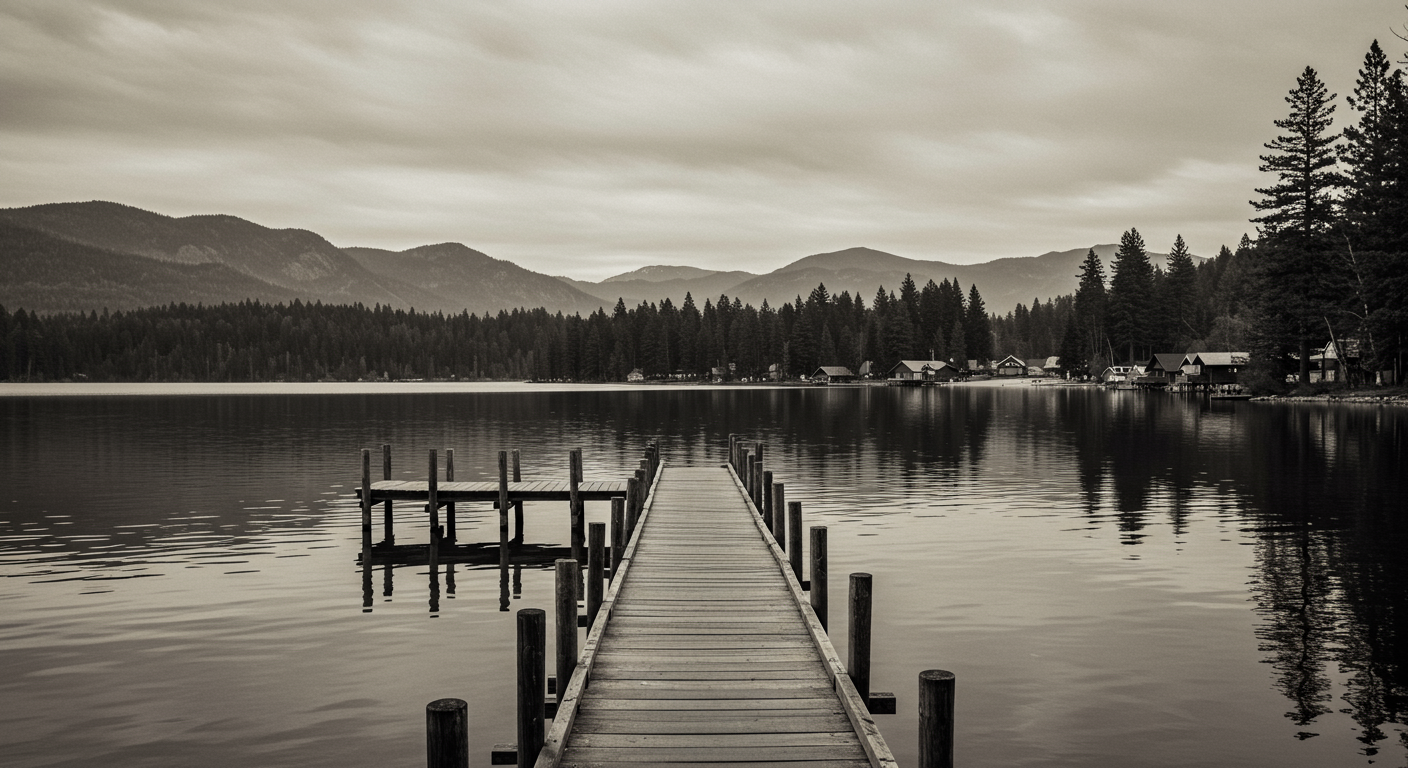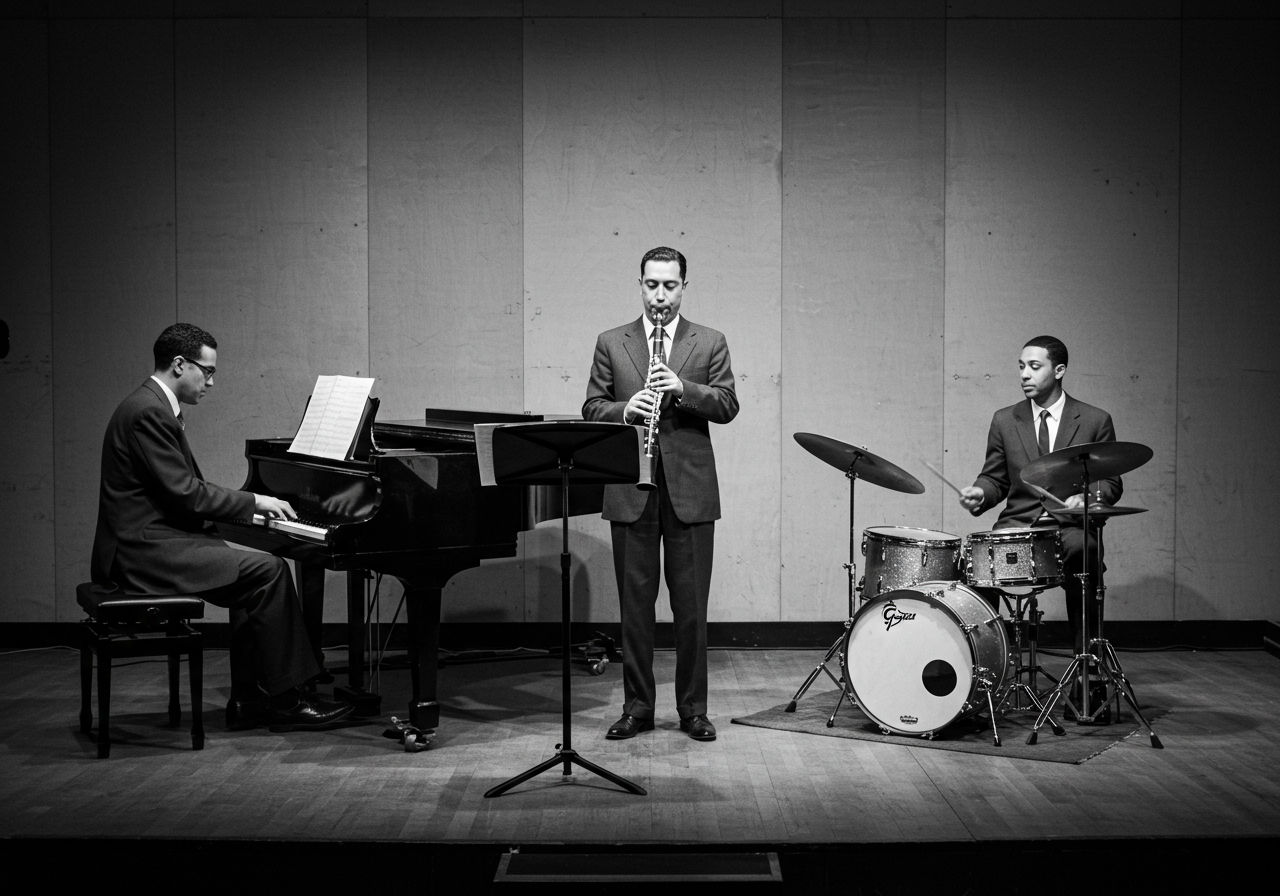Bijou means “jewel” in French, and as an adolescent boy in the early 1950s, the Bal Bijou on Lake Tahoe’s South Shore was the crown jewel of my and many others’ social and cultural lives.

A view of the community of Bijou around 1947 pictured from a long pier. The lakefront site would later feature the Bal Bijou dance hall, courtesy photo
Built in the 1930s in Bijou—a former unincorporated community that is now part of South Lake Tahoe—the Bal Bijou immediately became and remained a popular gathering spot for two decades. It was a dance hall visited by the best musicians of the era, including Count Basie, Lionel Hampton, Gene Krupa, Harry James, Artie Shaw, Duke Ellington and Woody Herman, among others.
I can’t think of a better place to have allowed my adolescent hormones to let loose than on the dance floor of the Bal Bijou. I experimented by asking girls of various sizes, hairstyles and colors, fashion attires and ages to join me for a dance. Sometimes girls asked me to dance. I was big for my age, so usually the girls were one to five years older. A few were grown women, among them one of my mom’s best friends whom I dreaded dancing with but lacked the confidence to refuse her requests. She was an alcoholic, smelled bad and held me tightly against her gyrating body in a way I would have enjoyed had she been 25 years younger.
Among the gifts the Bal Bijou bestowed on me was a deep, lifelong appreciation of music. At the time, I didn’t understand that I was witnessing some of the greatest musicians in history, but they spoke to and moved me and continue to do so more than 70 years later in a way that is unique to that genre.
Music moves and inspires and supports the mind, heart, spirit, imagination and body like nothing else, and as musical tastes evolve, so does the rest of the person.
In the winter, the Bal Bijou remained closed because there were few tourists besides skiers with the incentive to deal with the heavy snowfalls in the Sierra Nevada. The 1951-52 winter was one of the snowiest on record, and my family lived in a small two-story cabin near Stateline behind the Lakeside Theatre, about 100 yards from Cecil’s Market, the only grocery store. Roads were closed for more than two weeks, leaving the store’s inventory stripped bare. My bedroom was on the second story with a deck outside and we had to enter and exit the house through my bedroom. My only source of music was from an AM radio station that played country western.
During the summers, when the Bal Bijou hummed with activity, it was not unusual for couples to leave the dance hall and retire to either the back seats of cars or the soft sand of the nearby beach. On one occasion, my dance partner invited me to take a spin in her car, but when we arrived, another couple already occupied the back seat. My partner kindly decided not to kick them out, instead inviting me to the beach.
In autumn 1952 we moved to Reno, though I spent summers back at Tahoe with access to the Bal Bijou through 1956. I went from a one-room school at Zephyr Point with eight students, eight grades and one teacher to Reno High School with more than 2,000 students. In Reno, a wider range of musical options were available from radio stations, television and nightclubs.
I was introduced to Jazz at the Philharmonic and many other talented jazz musicians, including Dave Brubeck, Ella Fitzgerald, Billie Holiday, Miles Davis, Chet Baker, Thelonious Monk, Sarah Vaughan, Oscar Peterson, Stan Getz, John Coltrane, Charlie Parker and, of course, Louis Armstrong. I saw them all in person at one time or another as my appreciation for music continued to germinate—and continues to at the age of 85.
In the summer of 1957, at age 19, I had an epiphany that greatly expanded my love and knowledge of all music.
A year earlier I had graduated from Reno High and enrolled at the University of Nevada, Reno, for one semester before leaving to ski race. (It took me seven years to finish undergraduate studies as an English major because I only attended two winter semesters.) I tried to arrange as many morning classes as possible so afternoons were free to flee to the mountains, where I’d ski in winter and hike and swim in lakes in summer. In doing so, I signed up for a classical music appreciation class despite thinking such music was for prissy snobs and old people.

Benny Goodman (center) with Teddy Wilson (left) and Mel Tormé, courtesy photo
The epiphany was learning that Benny Goodman, one of my all-time favorite jazz musicians, was also one of the finest clarinetists of classical music. If it was good enough for Benny, it was good enough for me, and it immediately became my favorite class of the summer—a learning experience that changed my life and continues to do so. My car radio is always tuned to the nearest classical music station, and I regularly attend the annual outdoor classical concerts in Jackson Hole and Sun Valley.
All music does not speak to all people, but each piece of music speaks to someone. Some musicians and forms of music are more distracting to me than nutritious, but one person’s annoyance is another’s muse and sustenance. Not surprisingly, my appreciation and knowledge of musicians and music genres has expanded far beyond Bal Bijou fare.
My favorites include Ravi Shankar, Ali Akbar Khan, Ry Cooder, Norah Jones, Keith Jarrett, Bob Dylan, Joan Baez, Joni Mitchell, Arlo Guthrie, The Eagles, Crosby, Stills and Nash, Bonnie Raitt and many others. Perhaps my favorite of all is the Grateful Dead, whom I first saw in the summer of 1967 at the Kings Beach bowling alley on Tahoe’s North Shore.
In 1964-65 I was living in Europe and exploring ways to stay there when my best friend at the time, Ron Funk, reached out with the message that I must return to America because something was happening that I could not miss. That something was California in the 1960s.
By then the Bal Bijou had been turned into the most popular grocery store in the area, owned by friends I had known since childhood, Neal and Patty Olson. Patty was involved in local junior ski racing as their daughter, Chris, was a rising star on the Far West circuit. Patty was instrumental in getting me a job as a junior ski coach at Heavenly Valley, which induced me to leave Europe and return to Tahoe.
Among the musical gifts that move included was an introduction to Ralph Gleason, the music critic for the San Francisco Chronicle. He was a fantastic writer and the best music critic of that counterculture era. In a column, he wrote that the best drummer in history was playing at the Fillmore in San Francisco on September 3, 1967, with a band named Cream. The drummer’s name was Ginger Baker. Cream’s guitar player wasn’t so bad, either. His name was Eric Clapton.
All that musical and life experience came my way thanks to the Bal Bijou. Today, the memorable dance hall is gone, and in its place is CVS at the Bijou Shopping Center. All life is impermanent, and everything changes continuously, eternally and thankfully.
After his Tahoe upbringing, Dick Dorworth went on to a successful skiing and writing career, setting a world speed skiing record of 106 miles per hour, publishing seven books and writing for dozens of publications. Now a resident of Bozeman, Montana, he was inducted into the U.S. Ski and Snowboard Hall of Fame in 2011. Find more of his work at dickdorworth.com.